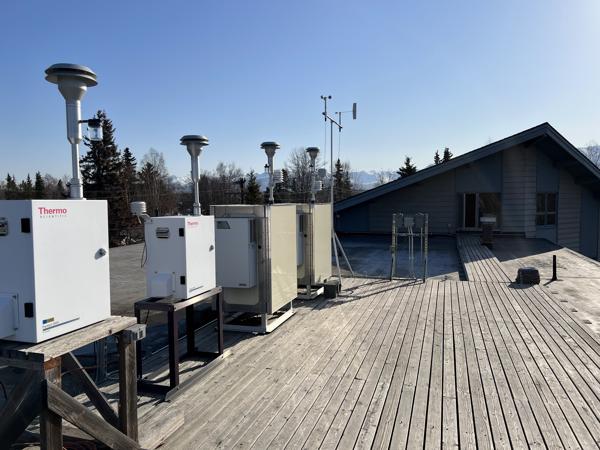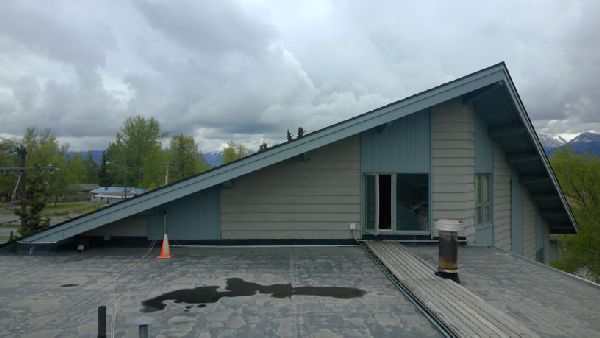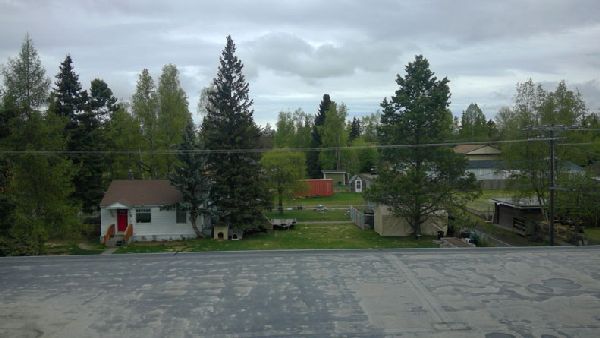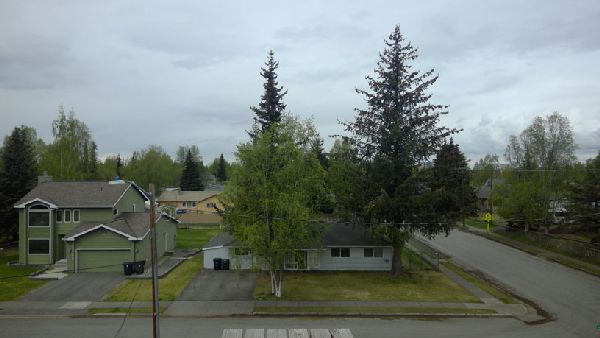Garden Air Quality Monitoring Site
Site Location
Monitoring Siting Criteria for the Garden Air Quality Monitoring Site
Introduction
The Code of Federal Regulation Title 40 Part 58 covers Ambient Air Quality Surveillance. Appendix E to Part 58—Probe and Monitoring Path Siting Criteria for Ambient Air Quality Monitoring contains specific location criteria applicable to State and Local Air Monitoring Stations (SLAMS) ambient air quality monitoring probes and inlets. These siting criteria are necessary to ensure the uniform collection of compatible and comparable air quality data. The probe siting criteria discussed in Appendix E must be followed to the greatest extent possible, although there may be situations where some deviation from the siting criteria may be necessary. Specific siting criteria that are phrased with a "must" are defined as requirements and exceptions must be approved through the waiver provisions. However, siting criteria that are phrased with a “should” are defined as goals to meet for consistency but are not requirements.
The Garden site, located on the roof of Trinity Church in the Airport Heights neighborhood of northeast Anchorage, is primarily a particulate matter (PM) and carbon monoxide (CO) monitoring site. Monitoring objectives for Garden are gathering data on typical background concentrations of PM10, PM2.5, and CO pollutants. The site consists of continuous PM2.5 and PM10 Met One Beta Attenuation Monitors (BAM) with particle size selective inlets, a pair of PM2.5 and PM10 filter-based Thermo Scientific 2000i Partisols, a Thermo Scientific 48i-TLE CO analyzer, and a radiation air monitor that is part of the Environmental Protection Agency’s (EPA) RadNet monitoring program.
Placement and Spacing
The table below has siting criteria as outlined in 40 CFR 58, Appendix E. The criteria were reduced to show only relevant criteria for the site.
Particulate Matter (PM2.5 & PM10)
| Applicable Section | Siting Criteria | Observed |
|---|---|---|
| Horizontal and Vertical Placement | 2-15 meters above ground level for neighborhood or larger spatial scale, 2-7 meters for microscale spatial scale sites and middle spatial scale PM10-PM2.5 sites. 1 meter vertically or horizontally away from any supporting structure, walls, etc., and away from dusty or dirty areas. If located near the side of a building or wall, then locate on the windward side relative to the prevailing wind direction during the season of highest concentration potential. |
Criteria Met. Sampling inlet is 6 meters above ground level. |
| Spacing from Minor Sources | For neighborhood or larger spatial scales avoid placing the monitor near local, minor sources. The source plume should not be allowed to inappropriately impact the air quality data collected at a site. Particulate matter sites should not be located in an unpaved area unless there is vegetative ground cover year round. |
Criteria Met. Chimney 3.8 meters away but is not in use. |
| Spacing from Obstructions (a) | To avoid scavenging, the inlet must have unrestricted airflow and be located away from obstacles. The separation distance must be at least twice the height that the obstacle protrudes above the probe inlet. |
Criteria Met. |
| Spacing from Obstructions (b) | The inlet must have unrestricted airflow in an arc of at least 180 degrees. This arc must include the predominant wind direction for the season of greatest pollutant concentration potential. For particle sampling, a minimum of 2 meters of separation from walls, parapets, and structures is required for rooftop site placement. |
Criteria Met. |
| Spacing from Trees | To reduce possible interference the inlet must be at least 10 meters or further from the drip line of trees. |
Criteria Met. Approximately 26 meters to drip line. |
| Spacing from Roadways | Spacing from roadways is dependent on the spatial scale and ADT count. See 40 CFR 58 Appendix E Section 6.3(b) and Figure E-1 for specific requirements. |
Criteria Met. Approximately 16 meters from roadway. |
Carbon Monoxide (CO)
| Applicable Section | Siting Criteria | Observed |
|---|---|---|
| Horizontal and Vertical Placement | For neighborhood or larger spatial scale sites the probe must be located 2-15 meters above ground level and must be at least 1 meter vertically or horizontally away from any supporting structure, walls, etc., and away from dusty or dirty areas. If located near the side of a building or wall, then locate on the windward side relative to the prevailing wind direction during the season of highest concentration potential. |
Criteria Met. Sample inlet is 2.6 meters above ground surface and approximately 1 meter from the nearest wall. |
| Spacing from Minor Sources | For neighborhood or larger spatial scales avoid placing the monitor near local, minor sources. The source plume should not be allowed to inappropriately impact the air quality data collected at a site. Particulate matter sites should not be located in an unpaved area unless there is vegetative ground cover year-round. |
Criteria Met. |
| Spacing from Obstructions (a) | To avoid scavenging, the probe inlet must have unrestricted airflow and be located away from obstacles. The separation distance must be at least twice the height that the obstacle protrudes above the probe inlet (exception is street canyon or source-oriented sites where buildings and other structures are unavoidable). |
Criteria Met. |
| Spacing from Obstructions (b) | The probe inlet must have unrestricted airflow in an arc of at least 180 degrees. This arc must include the predominant wind direction for the season of greatest pollutant concentration potential. |
Criteria Met. |
| Spacing from Trees | To reduce possible interference the inlet must be at least 10 meters or further from the drip line of trees. |
Criteria Met. 1 spruce tree is 2.7 meters from the sample probe inlet. |
| Probe Material & Residence Time (a) | Sampling train material must be FEP Teflon or borosilicate glass (e.g., Pyrex) for reactive gases. |
Criteria Met. FEP Teflon. |
| Probe Material & Residence Time (b) | Sampling probes for reactive gas monitors at Garden must have a sample residence time less than 20 seconds. |
Criteria Met. |








